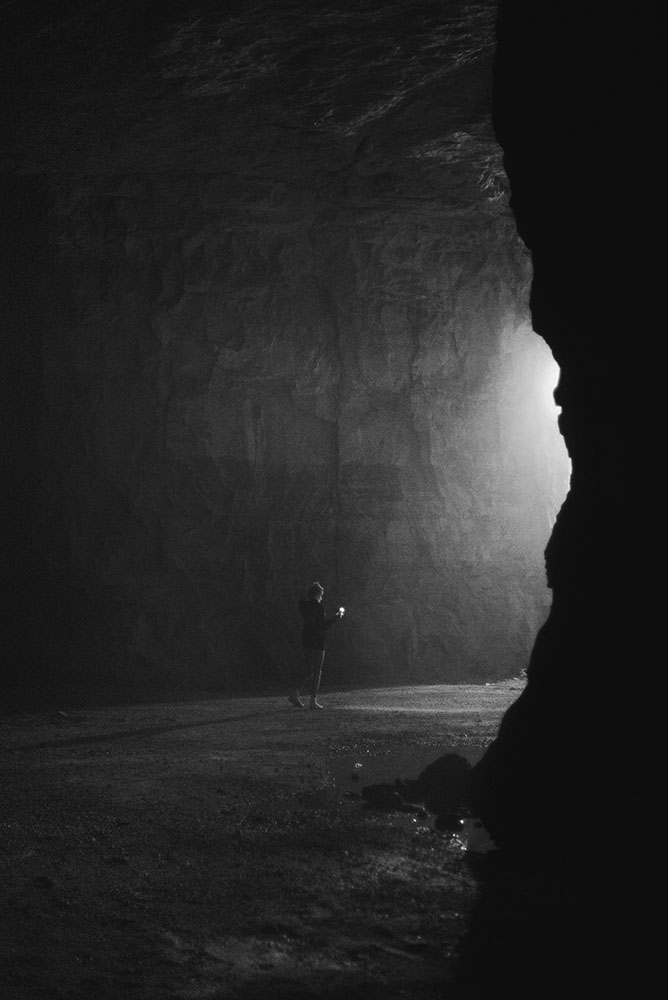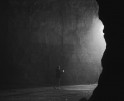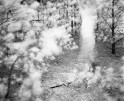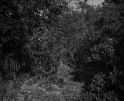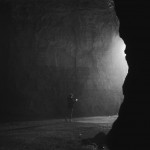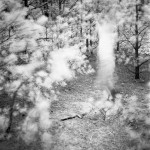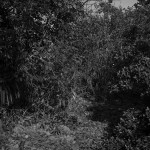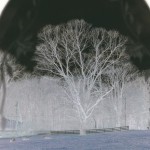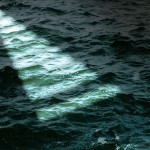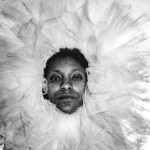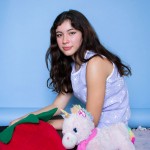The 2023 Lenscratch Student Prize Honorable Mention Winner: Tristan Sheldon
It is with pleasure that the jurors announce the 2023 Lenscratch Student Prize Honorable Mention Winner, Tristan Sheldon was selected for his project, Golem, and recently received a B.F.A. in Studio Art from the University of Missouri. The Honorable Mention Winner receives: $250 Cash Award and a Lenscratch t-shirt and tote.
Tristan Sheldon describes Golem as “an ongoing meditation on the conflicting and tenuous relationship between the built environment, the human body, and the natural world.” To me, it is a meditation on wonder. It begins with an image of a distant, solitary figure guiding us into the mouth of a vast cave. The brooding depictions of sleek industrial structures, obscured figures, and the gleaming stalagmites of underground caves that follow render the world unfamiliar and mysterious. Failed attempts to fence in landscapes and map terrains suggest the futility of our desire for control; darkness and light become metaphors for knowing and unknowing. Here the earth itself feels foreign, both as a place and as a substance.
This idea of entering into and emerging from is a central motif of this lyrical exploration of our tenuous relationship as both part of and separate from the world around us. In the aptly titled image Birth Canal, a muddy figure navigates a cramped underground passage for an unknown purpose. What will he take from this place? What will he leave in return? Here I am reminded of all the ways in which wonder– and wondering– can be either a generative or destructive force. The work does not attempt to explain or allow us to orient ourselves within it. Instead, we are left to discover our own role in a story that began long before we became a part of it.
I was honored to have the opportunity to speak with the artist about the work, his creative process, and his journey as a student.
An enormous thank you to our jurors: Aline Smithson, Founder and Editor-in-Chief of Lenscratch, Educator and Artist, Daniel George, Submissions Editor of Lenscratch, Educator and Artist, Linda Alterwitz, Art + Science Editor of Lenscratch and Artist, Kellye Eisworth, Managing Editor of Lenscratch, Educator and Artist, Alexa Dilworth, publishing director, senior editor, and awards director at the Center for Documentary Studies (CDS) at Duke University, Kris Graves, Director of Kris Graves Projects, photographer and publisher based in New York and London, Elizabeth Cheng Krist, Former Senior Photo Editor with National Geographic magazine and founding member of the Visual Thinking Collective, Hamidah Glasgow, Director of the Center for Fine Art Photography, Fort Collins, CO, Yorgos Efthymiadis, Artist and Founder of the Curated Fridge, Drew Leventhal, Artist and Publisher, winner of the 2022 Lenscratch Student Prize, Allie Tsubota, Artist and Educator, winner of the 2021 Lenscratch Student Prize, Raymond Thompson, Jr., Artist and Educator, winner of the 2020 Lenscratch Student Prize, Guanyu Xu, Artist and Educator, winner of the 2019 Lenscratch Student Prize, Shawn Bush, Artist, Educator, and Publisher, winner of the 2017 Lenscratch Student Prize.
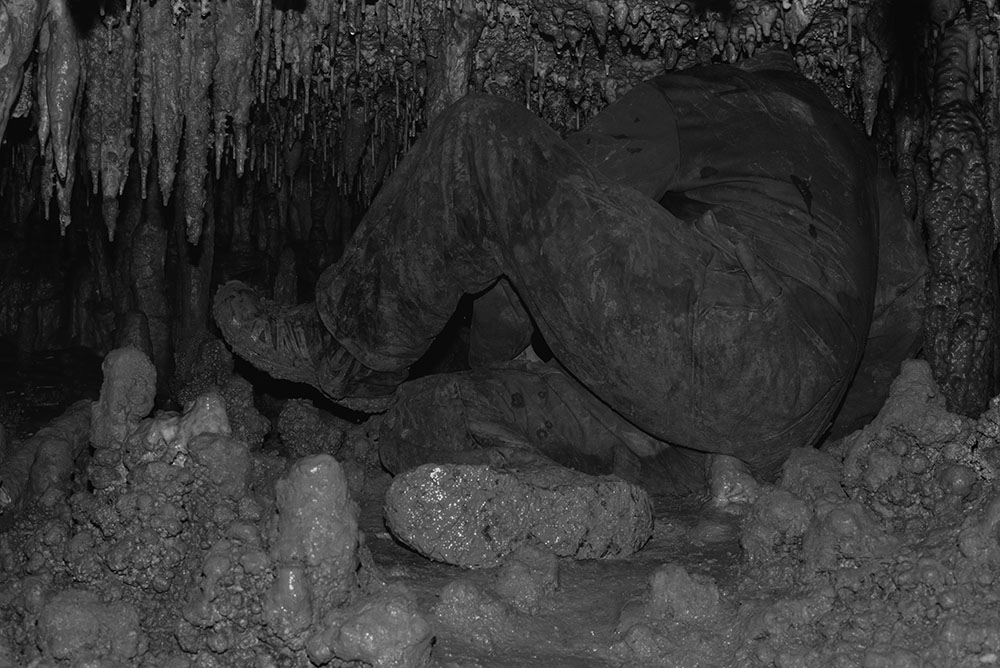
©Tristan Sheldon, Birth Canal
Golem is an ongoing meditation on the conflicting and tenuous relationship between the built environment, the human body, and the natural world. As we relentlessly shape and mold the world to our will, we disrupt a complex and largely unseen environmental balance on which we depend for survival. The work portrays human intervention in the landscape as both reverent and destructive. Through the use of dramatic contrast in tonal range and material, as well as recurring motifs of touch and physical impression, the work suggests a relationship with the world that is as harmful and predatory as it is tender and nurturing. – Tristan Sheldon

©Tristan Sheldon, Waking Up
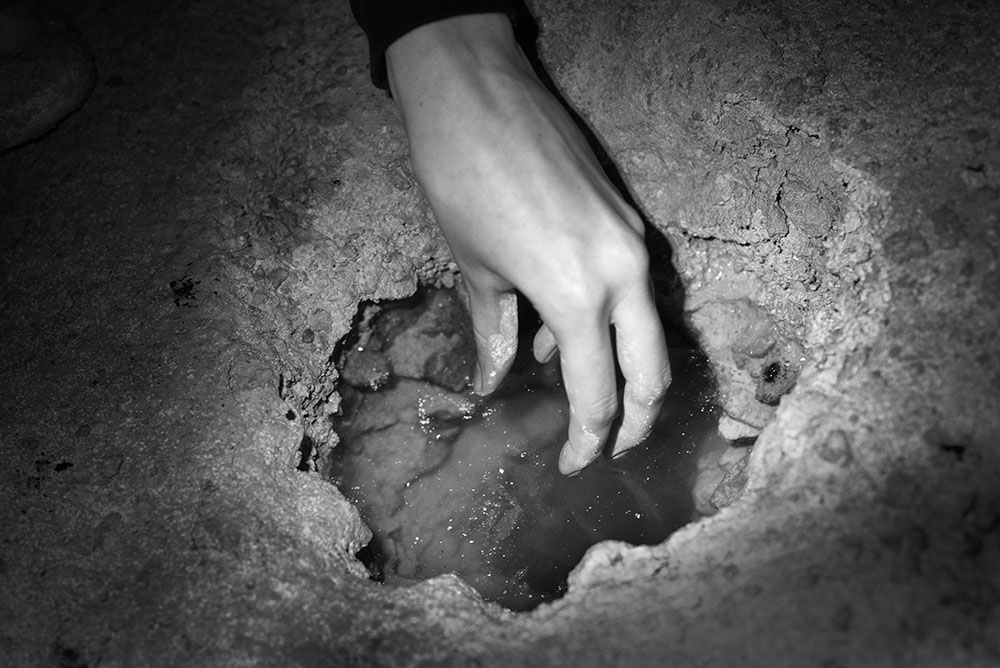
©Tristan Sheldon, Testing The Water
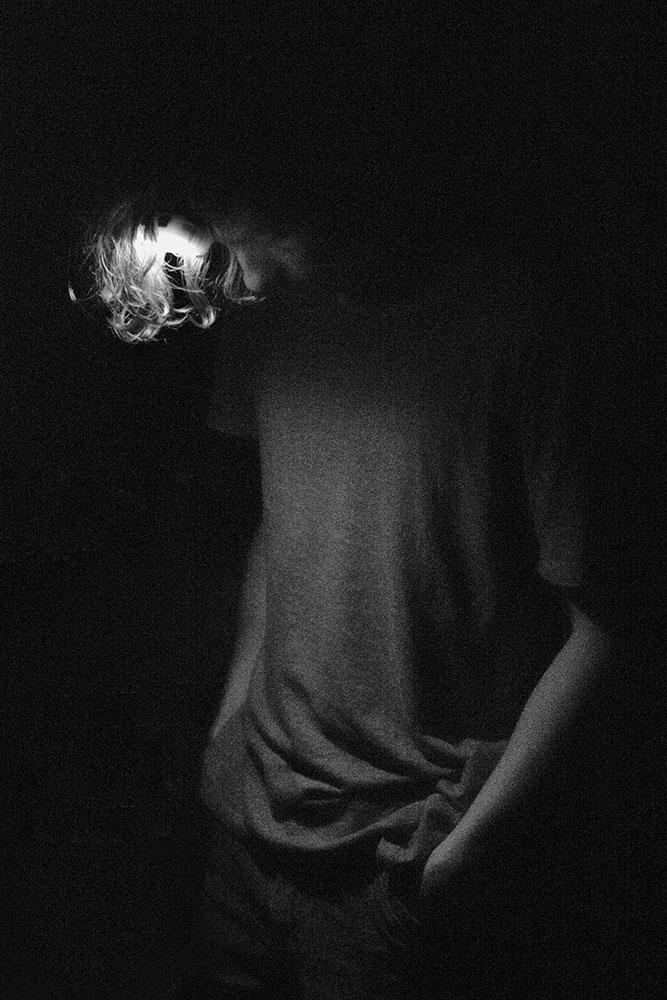
©Tristan Sheldon, Headlamp
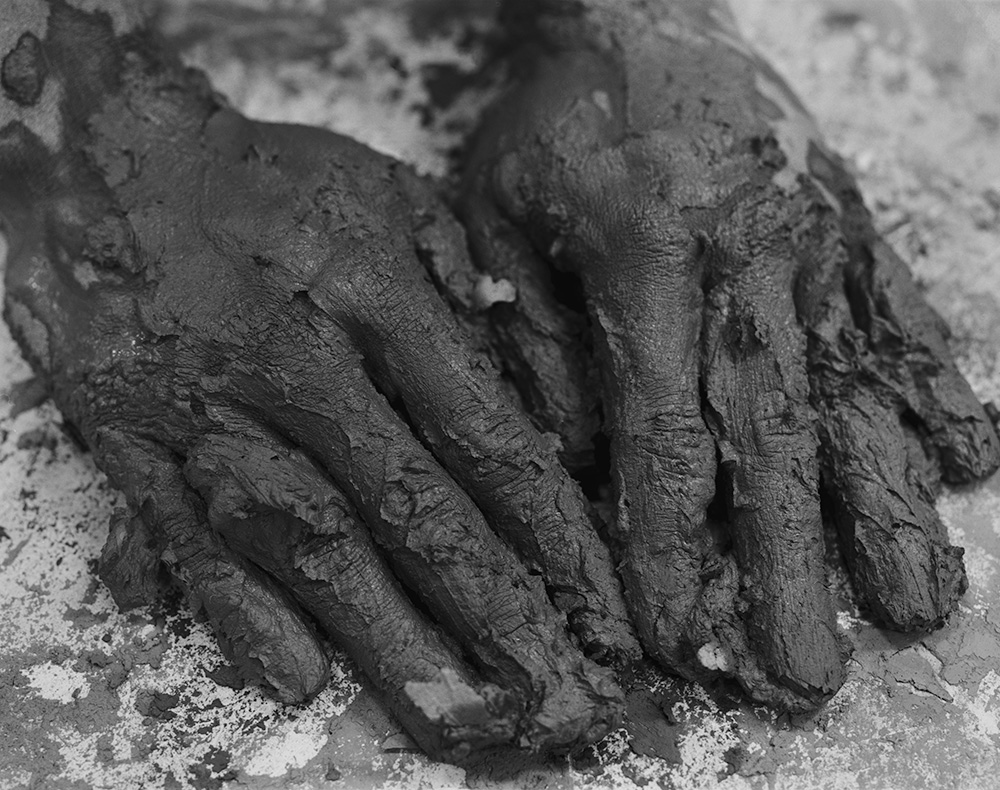
©Tristan Sheldon, Working Clay
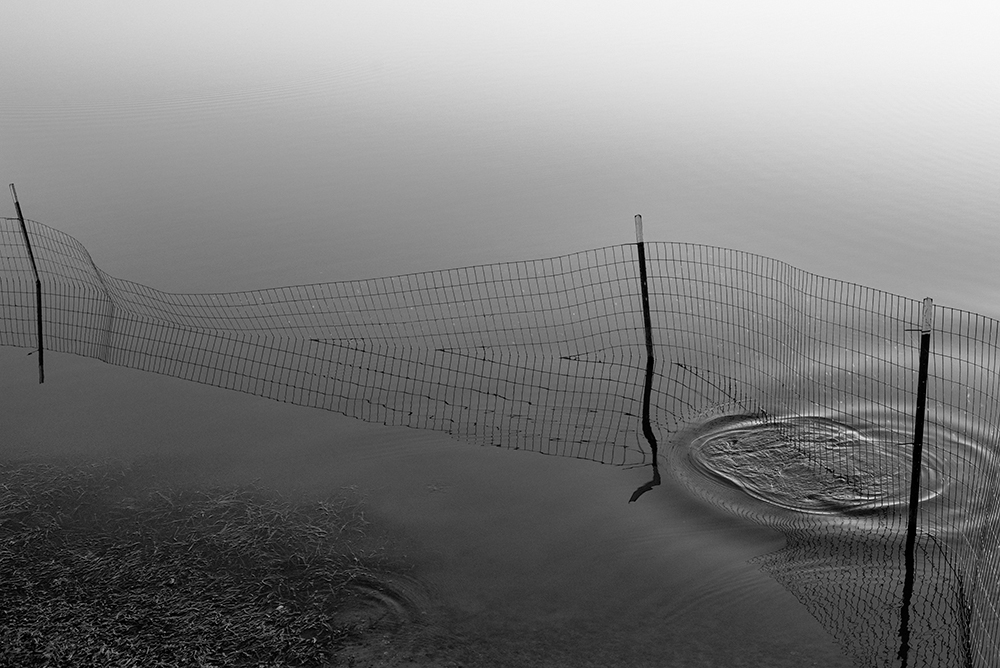
©Tristan Sheldon, Disruption
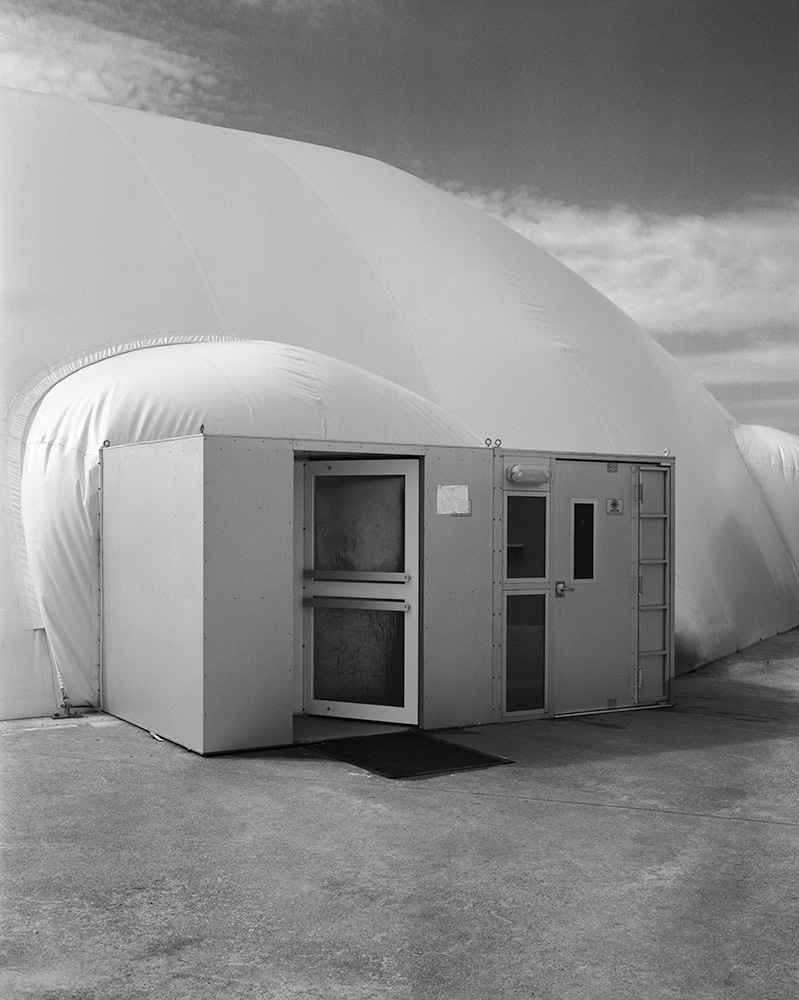
©Tristan Sheldon, Climate Control
KE: I find this work captivating because it leaves me with so many questions. The imagery of climate control structures and caves make me think of mining or other industries that have played a significant role in shaping the Appalachian landscape in which you made the images. Do you see the work as illustrating or commenting on the dynamic between man and nature within a specific context like that?
TS: I wouldn’t say that any of the images in the project are trying to portray any specific industry. They’re more intended to gesture towards more abstract ideas, as well as reinforce the visual language of the work. For example, a recurring visual motif of the work is opposing elements enveloping or consuming one another. A figure illuminating itself while shrouded in darkness, a skyscraper enveloped in mist, a man crawling through a narrow hole in the earth, etc. I feel that these images can sort of build a simultaneous feeling of agoraphobia and claustrophobia, referencing what it might feel like to be trapped underground or stuck inside a life support bubble in an inhospitable world.
My fascination with controlling natural systems such as soil and air quality stems from the idea that we live on a planet that is miraculously naturally capable of sustaining so many incredible and complex things, and yet we are pushing things to the point where we need to fabricate our own poor substitutes just to survive in bare minimum conditions. My interest in caves, in the context of this work, is actually something I picked up while doing research for the Lenscratch interview I did with Ron Jude, who was a huge inspiration in the making of this work. They reference the concept of Deep Time, that humans have existed for a blink of an eye in the context of our planet, and that the caves beneath us may have only grown a few feet since we began drawing in them.
I think that it’s an element that emphasizes both our fragility and our hubris, and I also personally draw some comfort from the notion that if we were to wipe ourselves out, the planet would most likely have completely recovered from the momentary insanity of humanity within a couple million years.
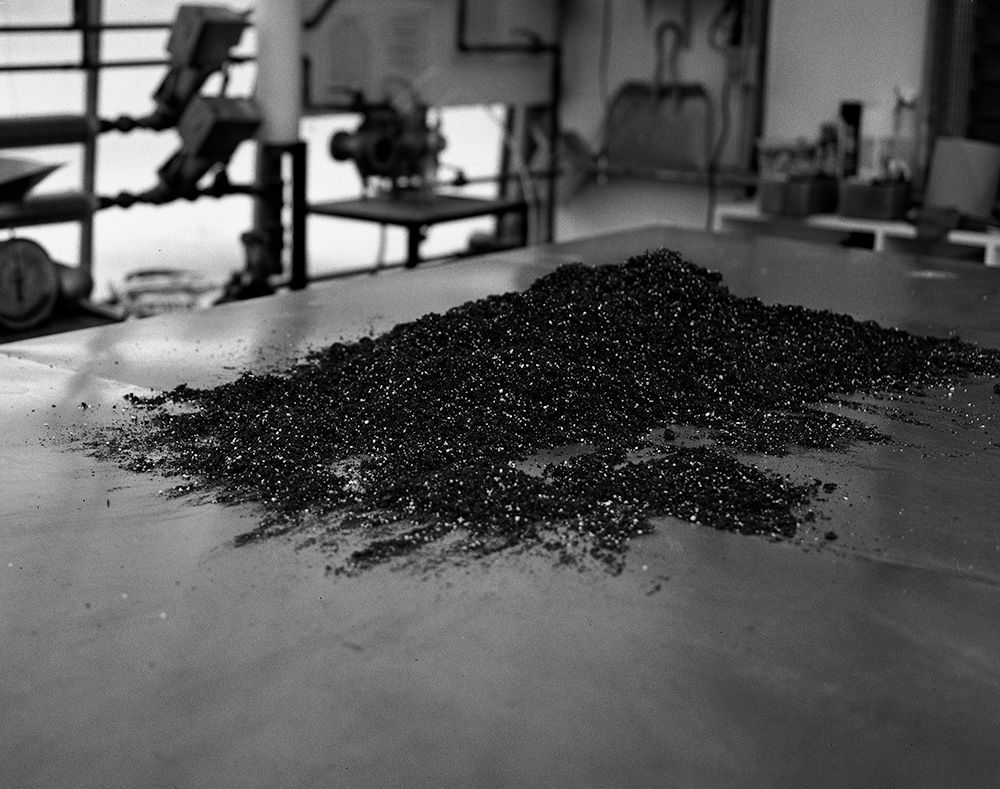
©Tristan Sheldon, Soil Sample
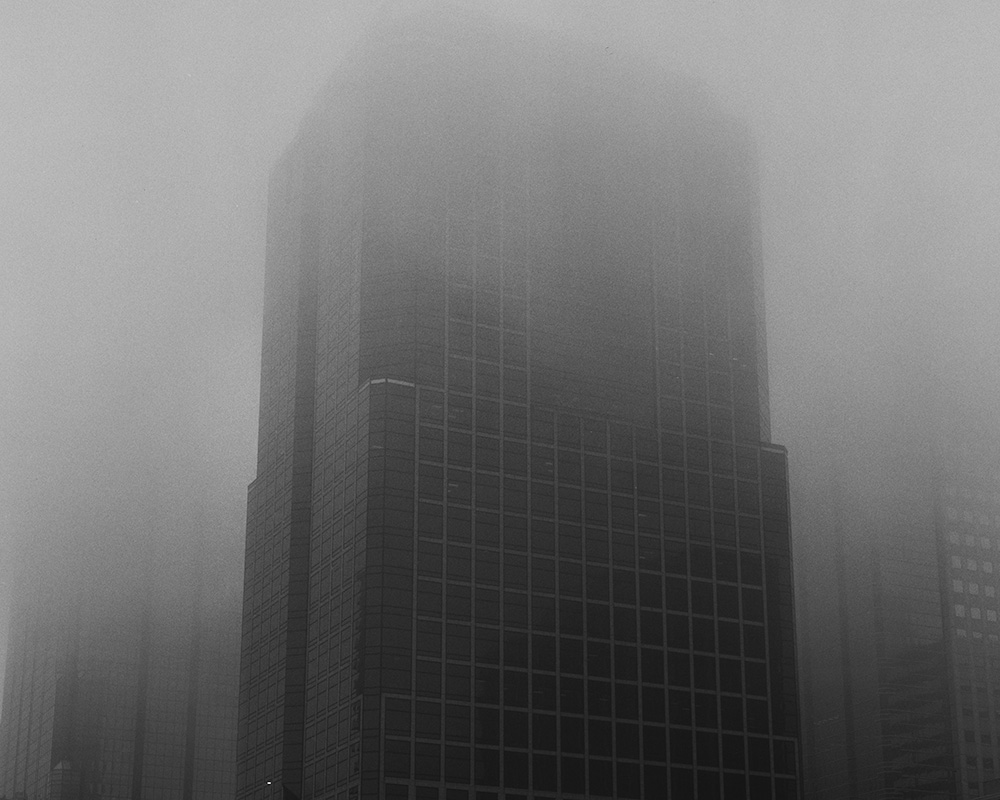
©Tristan Sheldon, Skyline
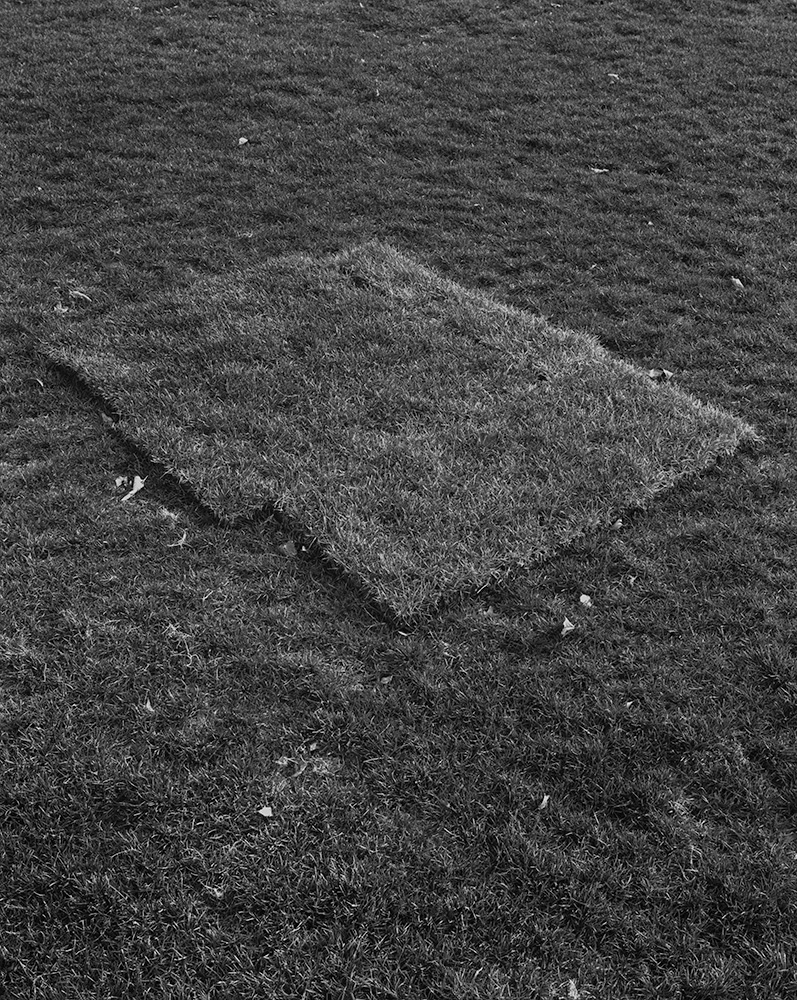
©Tristan Sheldon, Sod
TS: This was a major breakthrough because it was the first time I had made something that was actually an attempt to express or communicate something, which I now see as a pretty critical part of creating compelling art. As I discussed before, the main breakthrough between that point and now is my use of a handheld camera. This lets me shoot more dynamically and spontaneously, but, more importantly, it lets me shoot way more quantity and way more often. I still love and use the large format camera, and see it as an incredibly beautiful format, but broadening my selection of tools has definitely been an important component in growing as an artist and as a photographer.
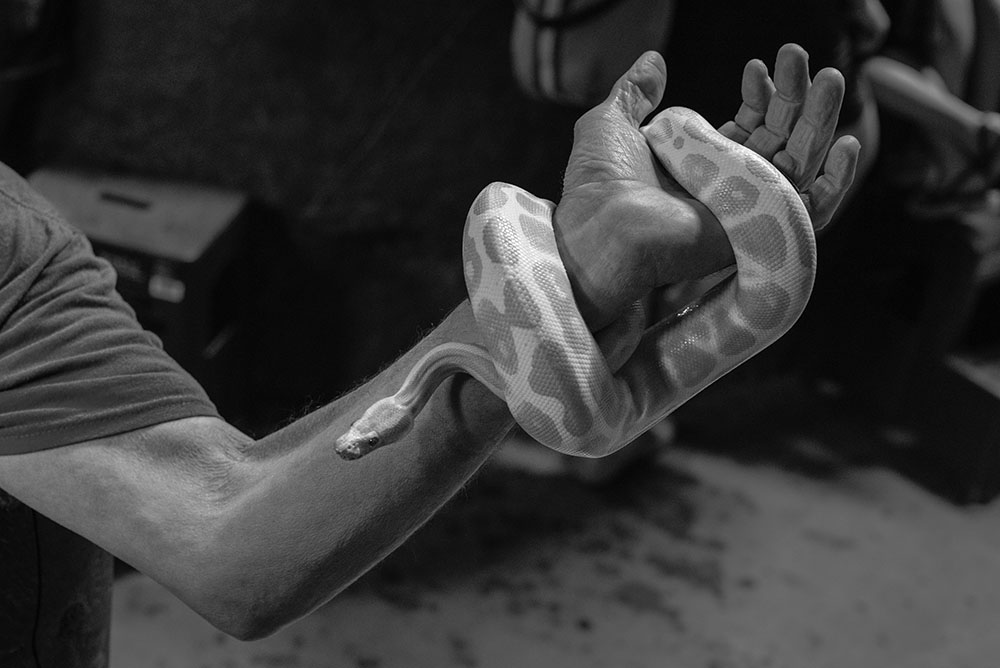
©Tristan Sheldon, Rehabilitation
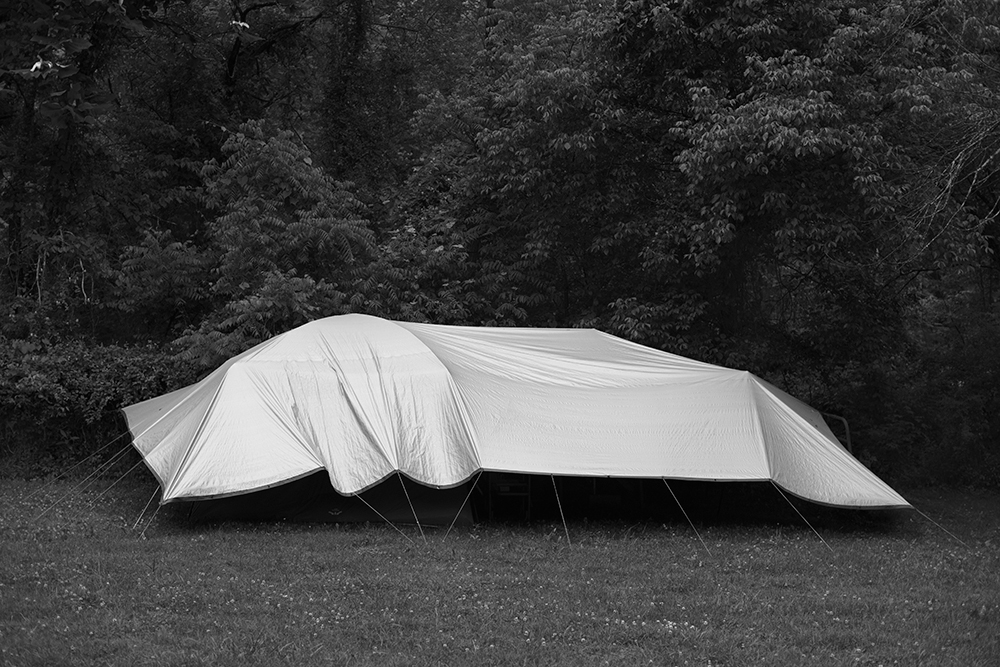
©Tristan Sheldon, Shelter
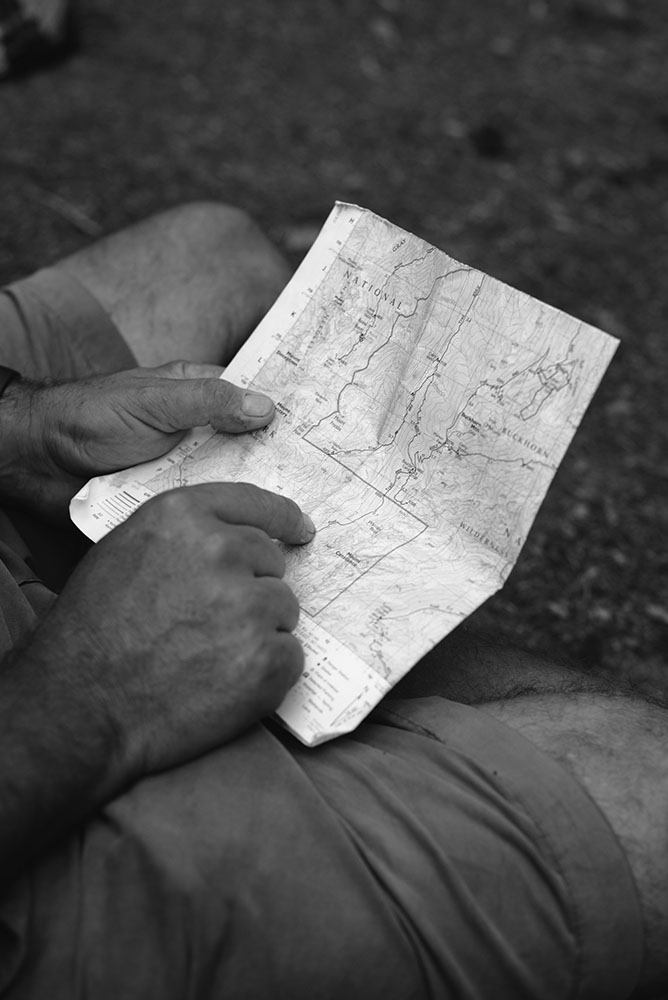
©Tristan Sheldon, Orienting
KE: Lastly, I’d love to know what’s next for you?
TS: Hopefully grad school, if I can find a good fit! I’m taking the year to try and save some money as well as focus on some other passions of mine that I’ve been neglecting through school, such as climbing, music, and dirtbagging around with my friends. I’m also trying to maintain my artistic practice outside of the academic setting. But I already feel myself missing the rigor and community of art school, so the plan is definitely to go back soon.
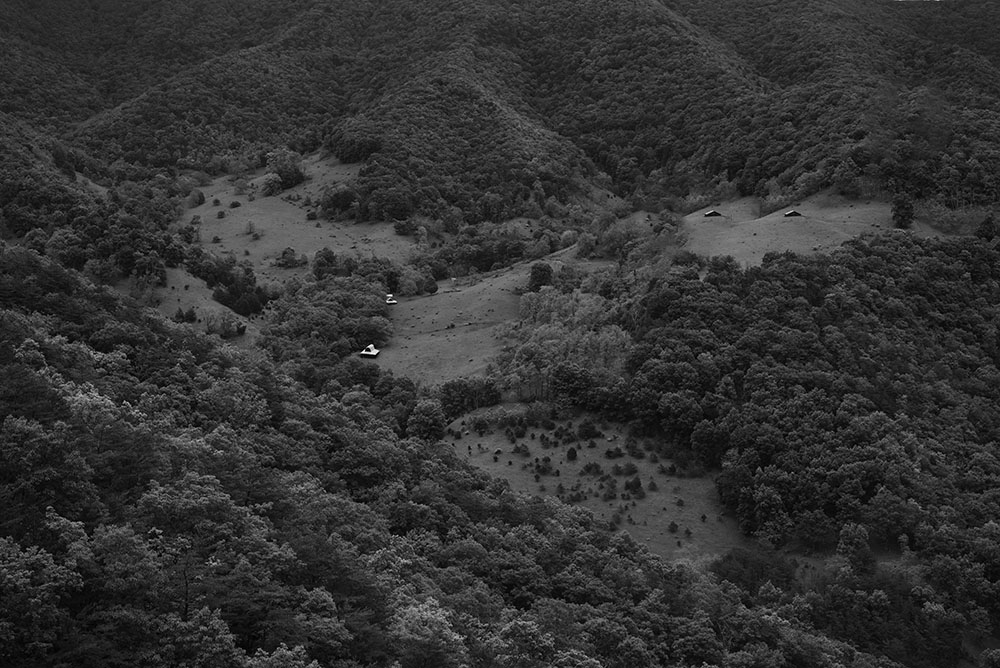
©Tristan Sheldon, Appalachian Homesteads
Tristan Sheldon is a lens-based visual artist living and working in Columbia, Missouri. His work is primarily a meditation on themes of land use and human occupation and impact. He recently graduated from the University of Missouri with a BFA in Studio Art.
Follow Tristan on Instagram: @tristan__sheldon
Posts on Lenscratch may not be reproduced without the permission of the Lenscratch staff and the photographer.
Recommended
-
The 2023 Lenscratch Student Prize Honorable Mention Winner: Tristan SheldonJuly 30th, 2023
-
The 2023 Lenscratch Student Prize Honorable Mention Winner: Hannah NigroJuly 29th, 2023
-
The 2023 Lenscratch Student Prize Honorable Mention Winner: Elena Bulet i LlopisJuly 28th, 2023
-
The 2023 Lenscratch Student Prize Honorable Mention Winner: Paola ChapdelaineJuly 27th, 2023
-
The 2023 3rd Place Lenscratch Student Prize Winner: Anna RottyJuly 26th, 2023

